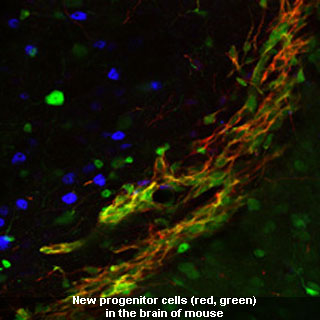
The researchers apparently found progenitor cells which could grow into new glutamatergic neurons subsequent to injury to the cerebral cortex. Predominantly in Alzheimer’s disease, nerve cell degeneration apparently plays a vital function. In the future, new therapeutic options could probably be ensuing from navigating the generation and/or migration mechanism.
Formerly, neurogenesis, the procedure of nerve cell development was thought to be unfeasible in the adult brain. It was claimed that dead nerve cells could not be substituted. After that, the researchers found areas in the forebrain of humans in which new nerve cells could be regenerated throughout life. These alleged GABAergic cells apparently utilize gamma-aminobutyric acid (GABA), a neurotransmitter of the central nervous system.
The researchers have now supposedly observed closely at this brain area in the mouse model. They discovered that even in the forebrain, there are other nerve cells that seem to be frequently triggered i.e. the alleged glutamatergic nerve cells, which apparently apply glutamate as neurotransmitter. The stem cell researchers could establish this through a particular transcription factor i.e. Tbr2. It is said to be only there in progenitor cells of glutamatergic nerve cells.
The recently activated nerve cells in the adult organism could be placed in the olfactory bulb, the area of the brain encompassed in the sense of smell. Nerve cells that apply glutamate as a neurotransmitter are also believed to be accountable for memory like hoarding and recovering information. In Alzheimer dementia, changes in the signal transduction trails of these exceptional cells could play an important function.
Magdalena Götz explained, “Neural progenitor cells can generate these newly discovered glutamatergic nerve cells for the neighboring cerebral cortex – for example after brain injury.”
The research group could exhibit on the mouse model that the cells moved into the impaired adjoining cerebrum tissue and activated developed neurons. Therefore, progenitor cells could then substitute degenerate nerve cells.
Magdalena Götz stated, “Now it will be interesting to find out whether this process also takes place in humans, particularly in Alzheimer’s patients and also whether the process can be kept under control to avoid massive cell death.”
One therapeutic technique could then be tried to fuel the body’s own proxy method.
The findings were published in the present issue of the journal Nature Neuroscience.
